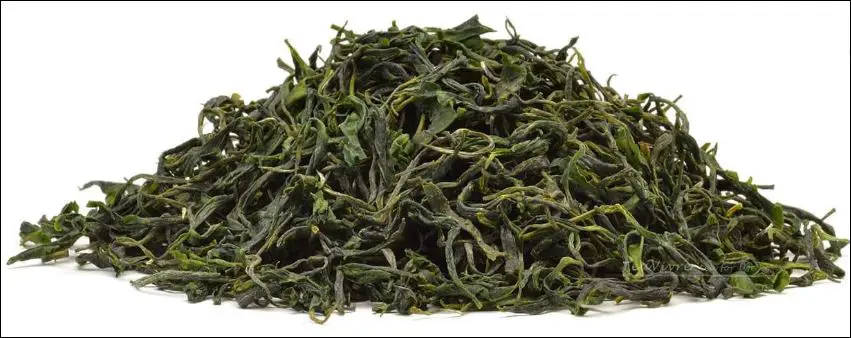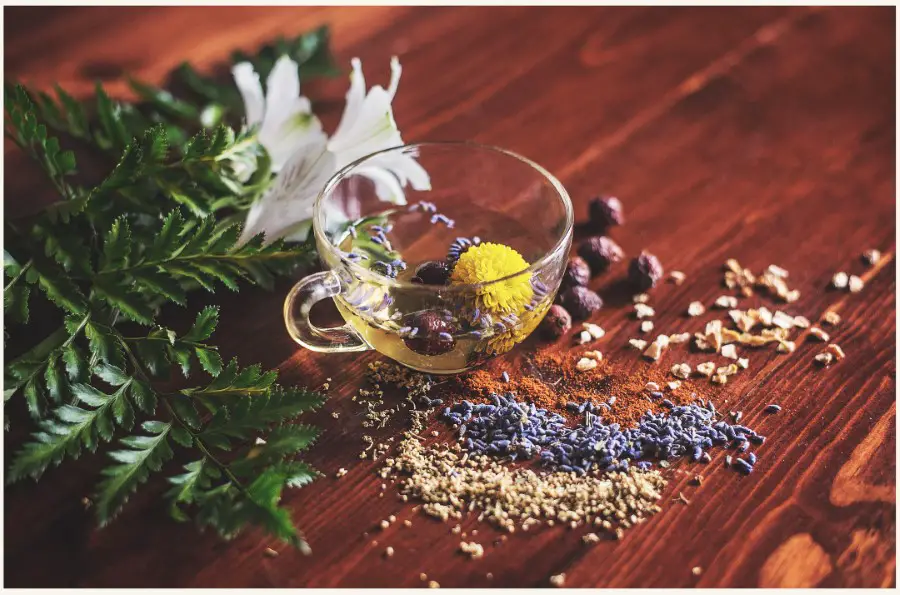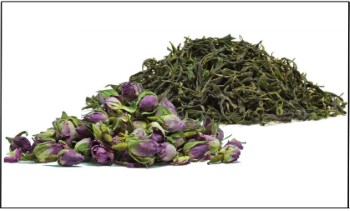It might seem obvious at first, that green tea is a form of herb, but long ago I thought all teas were just tea, black, green or herbal. It doesn’t take much to find out that there are a number of types of ‘actual’ teas with minor differences in production. Herbal teas are different
In this instance, we can categorize green tea to be the same as black, white, oolong, or any other tea – as the answer to this question remains the same for all of them.
So what is the difference between green tea and herbal tea? There are two main differences.
1. The Source: All ‘official’ teas (including Green) are derived from the Camellia Sinensis plant, Herbal teas come from a variety of other sources.
2. Chemical Composition: Mainly that tea contains up to 5% caffeine, herbal tea has none, but provides other benefits.
Are Green Tea and Herbal Tea Both Tea?
They are both called ‘Tea’. That is, Herbal Teas are added into the same beverage ‘bracket’ as green and other teas. But Herbals teas are not officially tea. They’re commonly called Tea in name, but Tisanes and/or Infusions are their correct classification.
Having said that, it’s perfectly acceptable to refer to them as tea. Using the phrase Tisanes can often be considered tea snobbery!
We can categorize green tea reasons why they are not the same thing. Read on to find out more.
What is Green Tea?

I’m intending to cover this in more detail in a later post as it’s a BIG subject, but you can find out sufficiently more details about it in my article about The 4 Basic Types of Tea. Suffice it to say Green tea, was once picked from the Camellia Sinensis (Tea) plant. Then undergoes a number of processes, including withering, rolling, oxidation, and firing – or in Japan Steaming.
For all tea, the length and intensity of these processes
A significant component of tea, in general (not just green tea), is the presence of caffeine. I wrote an article about caffeine levels in Tea. There’s up to 5% of the caffeine in tea. Which can vary depending on a number of factors, like altitude, time of year, cultivar etc. Tea also contains levels of tannins, polyphenols,
What Kind of Tea is Herbal Tea?
Other than the Camellia Sinensis plant, Mother Nature provided a wealth of flora and fauna for us to ingest, and these can be harvested to produce a beverage that levies the benefits those plants offer.
Herbal Tea
Or should I say tisanes… or infusions, are sourced from a large variety of plants. Herbal teas are made out of plants’ components, such as stems, roots, flowers, buds,
There are other variations on this theme, that form part of this discussion so should be mentioned too…
Fruit Tea
Also known as Fruit
Flavored Tea
Just to confuse terminologies further, flavored teas are NOT actually Tisanes at all. Flavored teas are exactly that, they are actually… definitely… tea. You might also see them referred to as Fruit Infusions.
Meaning they’re derived from the Camellia Sinensis plant, therefore they would be black, green, white, yellow, oolong or Pu’erh and they’ve simply had flavor added to them in order to change the taste.
Are Herbal Teas Caffeine Free?
Just to be clear here, caffeine-free is not the same as decaffeinated. Decaffeinated involves a process in which the majority of caffeine is stripped from the plant using chemical processes.
I say the majority as there will or may still be traces of caffeine present. In any event, it’s unlikely you will come across any kind of herbal remedies that have been decaffeinated.
Mainly, on the whole, most herbal teas are naturally caffeine free. However, there are a few exceptions.
Yerba Mate is a special beverage widely produced and consumed in South America. It’s derived from a species of Holly. Yerba Mate is believed to contain almost as much caffeine as coffee.
Coffee leaves are also now used to make herbal teas! That’s right, now you can just about get your caffeine hit in tea form! However, the caffeine hit isn’t quite as much as you would actually get from coffee.
Others might be guayusa, similarly a member of the Holly family and so a cousin to Y
Lastly one might think of yaupon, again a variety of Holly but native to North America, also richly caffeinated, with similar benefits to green tea – but is an acquired taste as it’s known for its bitterness!
Ways to Prepare Herbal Tea

There are two main methods to extracting goodness from Herbal Teas, that is unless you want to include Extracts and Tinctures which are a far more concentrated version of the herbal plant, are processed differently and ingested differently too.
So for Herbal Teas, the two main methods are Infusions and Decoction.
Infusion
This is the method that most of us are familiar with and is the one used most commonly.
The simple process of adding boiling, or near-boiling water to a cup using an infuser or often a teapot with an infuser and allowing it to steep for a period of a few minutes, in much the same way you might prepare tea and then drink or pour to taste depending on the method.
Decoction
This is more like something an Herbalist would perform! A decoction is used for denser, hardier, and more woody forms of plants like the roots, bark, or stems.
Typically the components of the plant are brought to a boil in water and allowed to simmer for a period of time to reduce the water content. Once strained, the result is a condensed beverage version of the plant.
Final Thoughts
It’s little facts like the difference between herbal tea and green tea, that most people would forgive you for not knowing the exact answer for. Nonetheless, I hope this has helped you understand the difference between green tea and herbal tea, or infusions a little better. As well as a few alternatives to ponder.
And what’s in a name anyway! I’m not sure any of that really matters, and moreover, I’m not sure how you take it really matters either. The thing to focus on here are the benefits you get from any of the above methods, beyond taking account of any side effects and the fact that each person is different.
Looking to eke out those extra few milligrams of this enzyme or that polyphenol, in the long run, is not really going to have any long-lasting effect. What does have a lasting effect is whether you are enjoying the method by which you implement herbal teas into your routine, and maintain
Capsules, infusions, tea, green tea, or Yerba mate. However you prefer it, make sure you’re aware of the side effects and the benefits, and more than anything, just make sure you enjoy the taste. Because that is what will keep you drinking it.
I should also point out I’m not a medical practitioner, so what herbal teas or remedies you decide to take is completely up to you and I’m not here to recommend any particular route. If in doubt, always seek advice from a medical professional.
